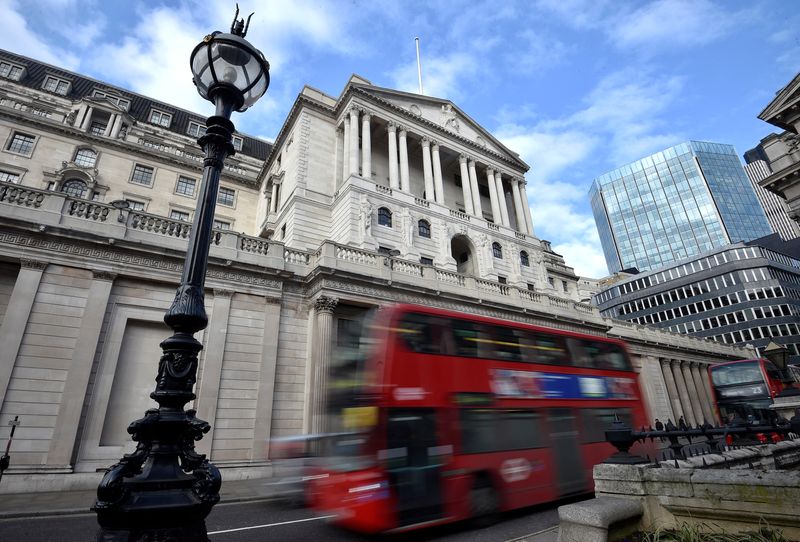By David Milliken
LONDON (Reuters) -Yields on 30-year British government bonds rose to their highest in more than 25 years on Friday, part of a broader global move as tensions in the Middle East raise concerns about higher oil prices and inflation.
The yield on the benchmark 30-year gilt rose as high as 5.134% at 1010 GMT, up 5 basis points on the day to its highest since September 1998, according to LSEG data, pushing past a previous peak of 5.115% set on Oct. 4.
Ten-year gilt yields were 2 basis point higher on the day at 4.69%, not far off a 15-year high of 4.755% set on Aug. 17.
Unlike a year ago - when British government bond yields rose much more sharply in other countries, due to market disquiet about the fiscal plans of then prime minister Liz Truss - the latest increase is part of a global move.
Ten-year U.S. Treasury yields rose above 5% for the first time since July 2007 on Thursday, following remarks by Federal Reserve Chair Jerome Powell, which investors viewed as pointing towards interest rates staying higher for longer.
"Markets remain unsteady and investors undecided, as rising Middle Eastern tensions and bond yields threaten to undermine any thoughts of an immediate rally," said Richard Hunter, head of markets at investment platform Interactive Investor.
British government borrowing came in below expectations in September data released earlier on Friday, but finance minister Jeremy Hunt said debt servicing costs looked set to double this year due to higher interest rates and inflation, which he said was "clearly not sustainable".
The average maturity of British government debt is around eight years - longer than other advanced economies - but the Bank of England's quantitative easing programme has made the cost to the Treasury much more sensitive to short-term moves.
The government's Office for Budget Responsibility estimates the effective maturity is nearer to two years.

The BoE has raised its interest rate 14 times since December 2021 to 5.25%, but investors think it is now on pause, with only a 13% chance of a rate rise on Nov. 2 after its next meeting.
The chances of a further quarter-point rate to 5.5% by March next year stand at around 55%.